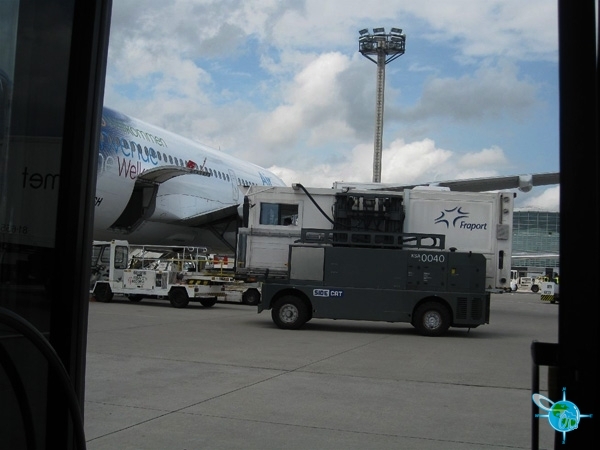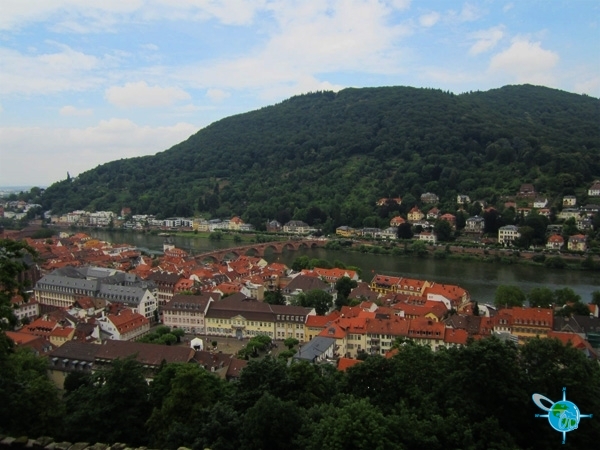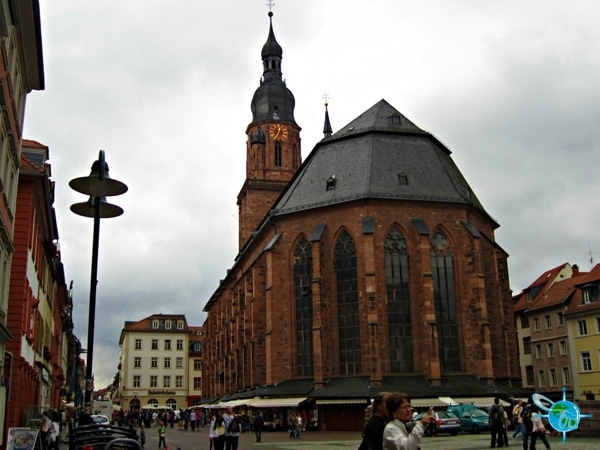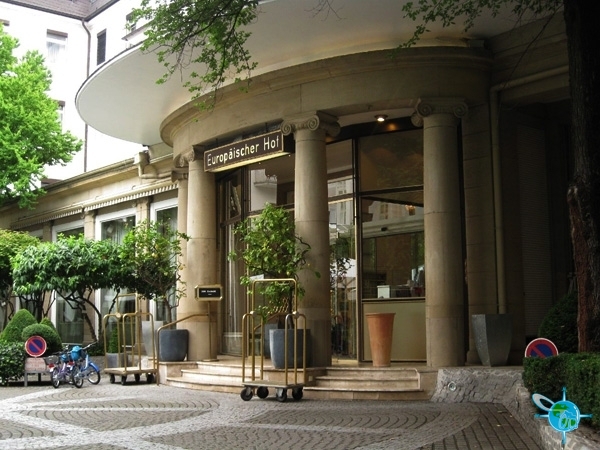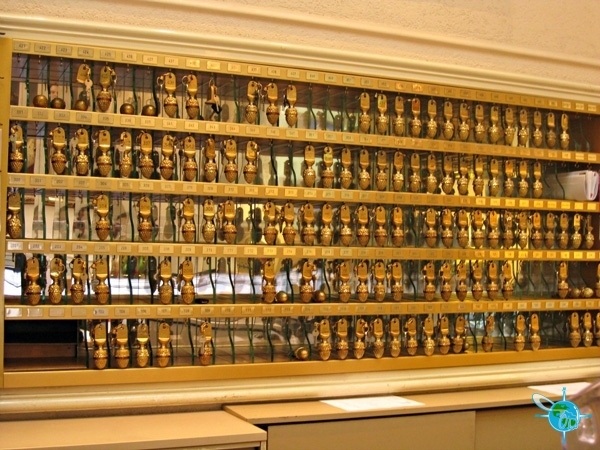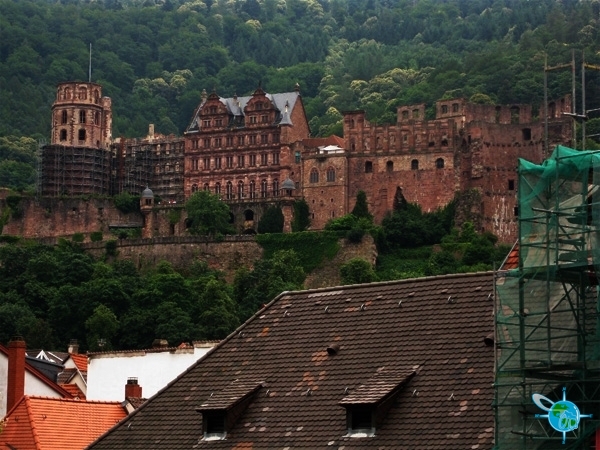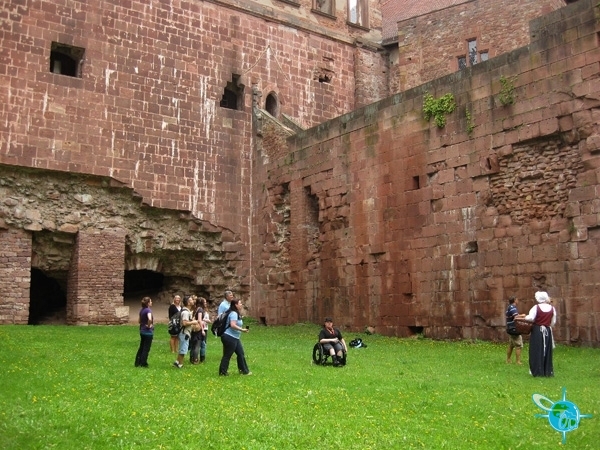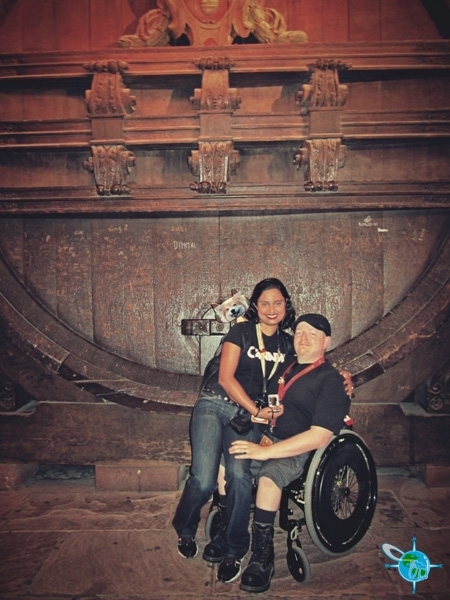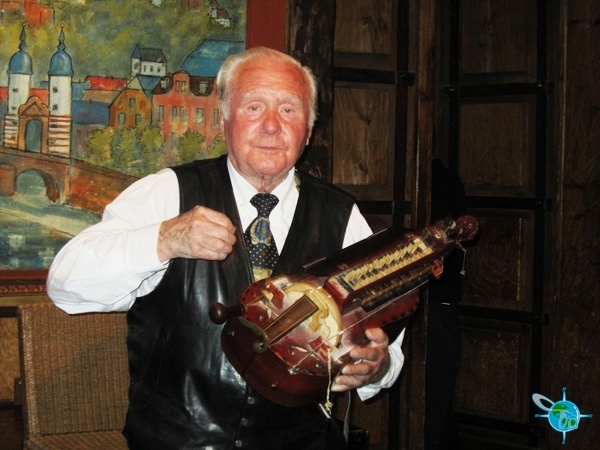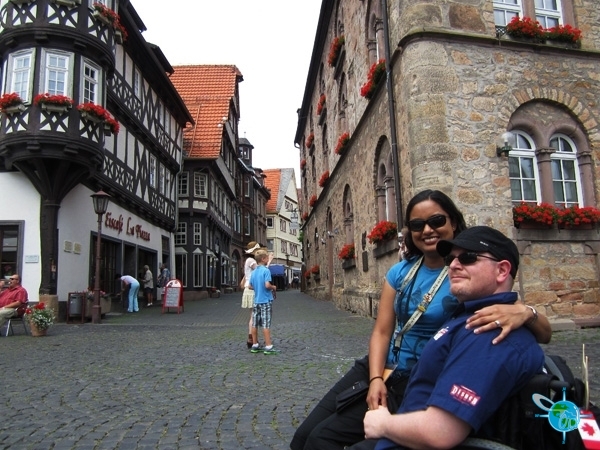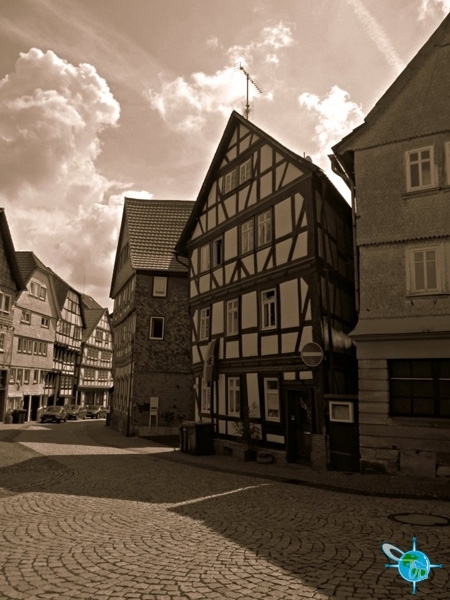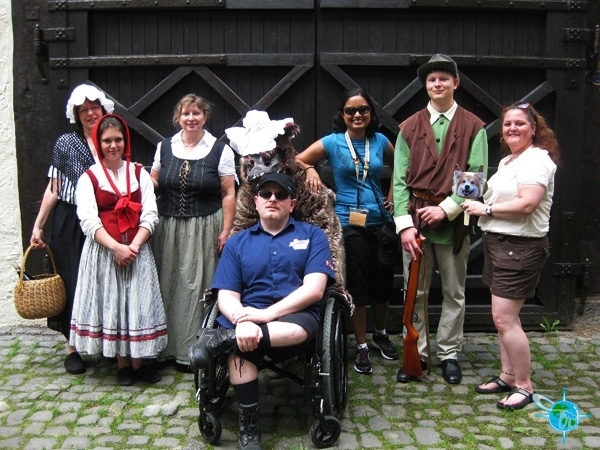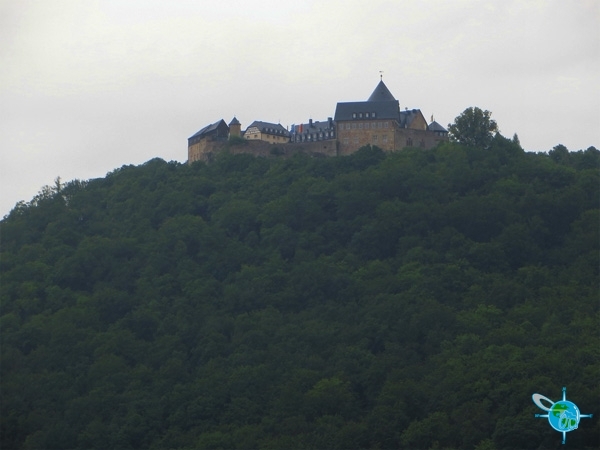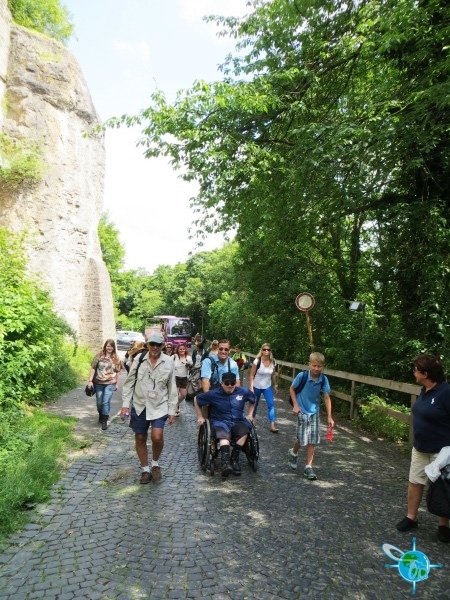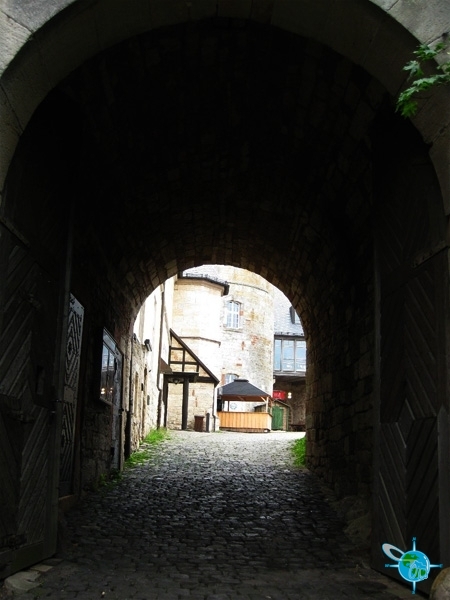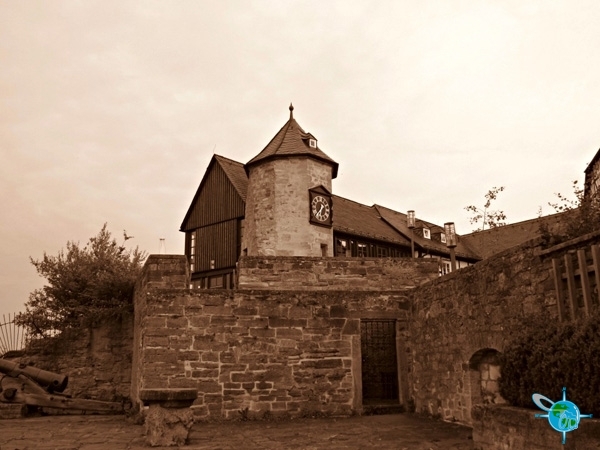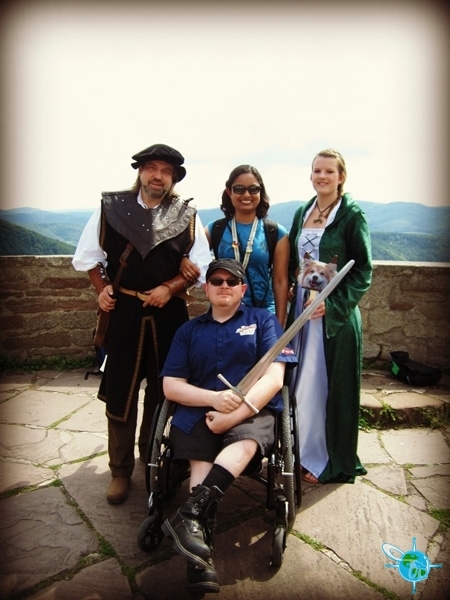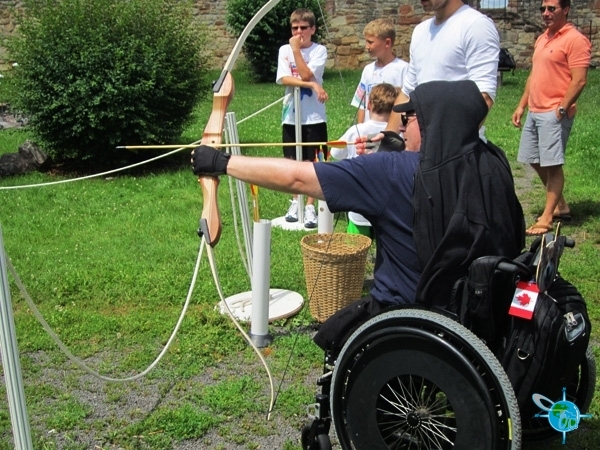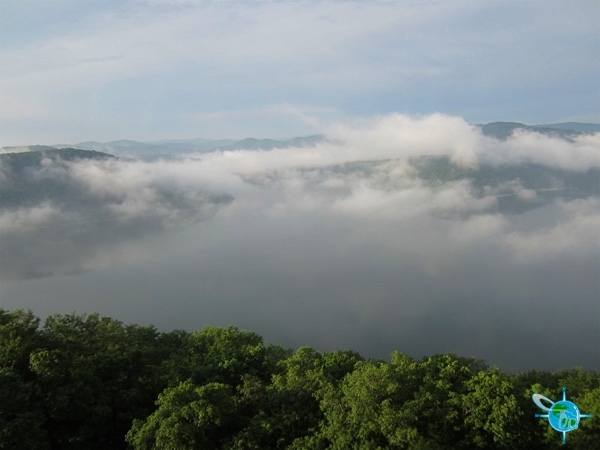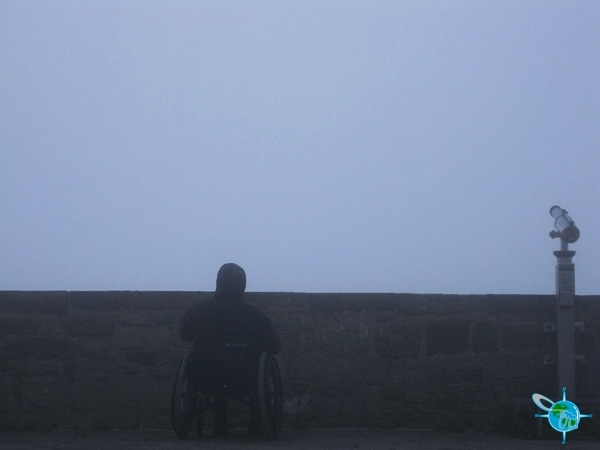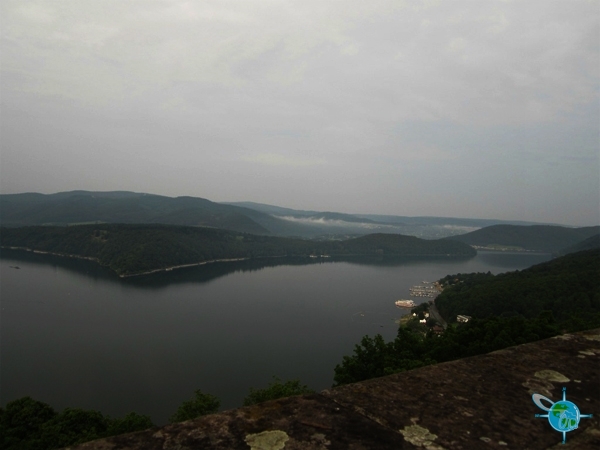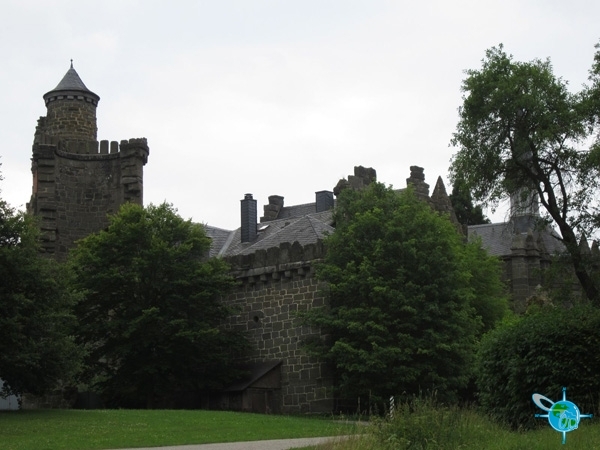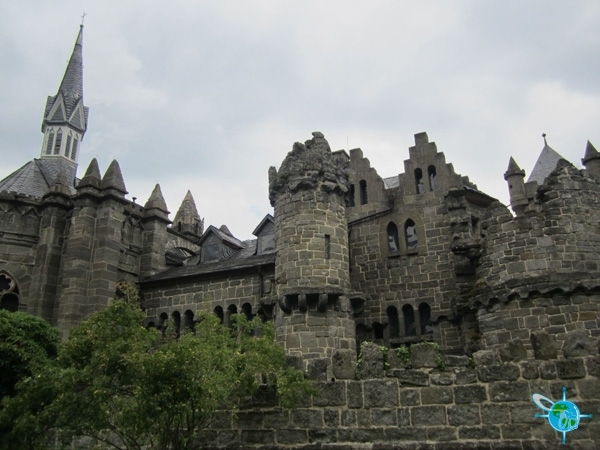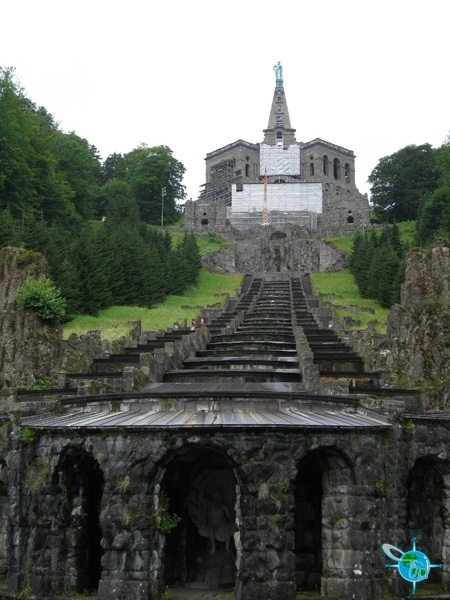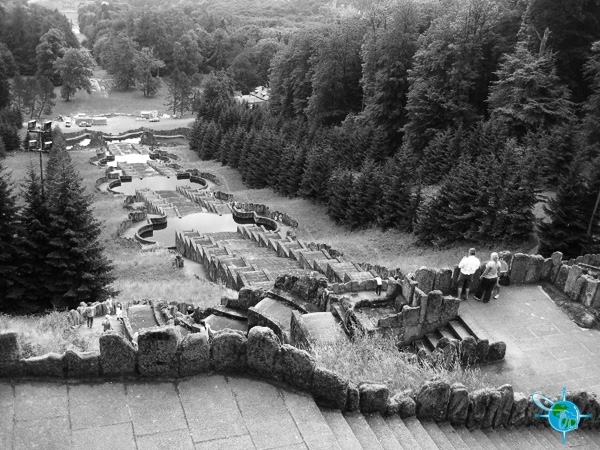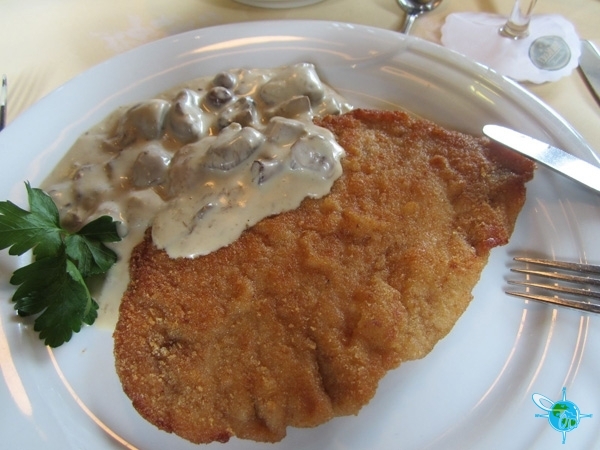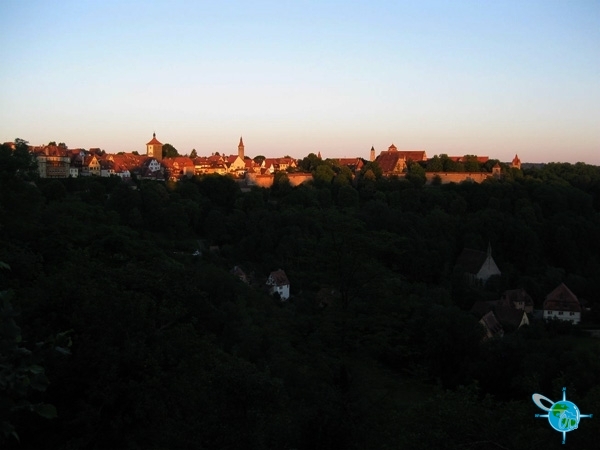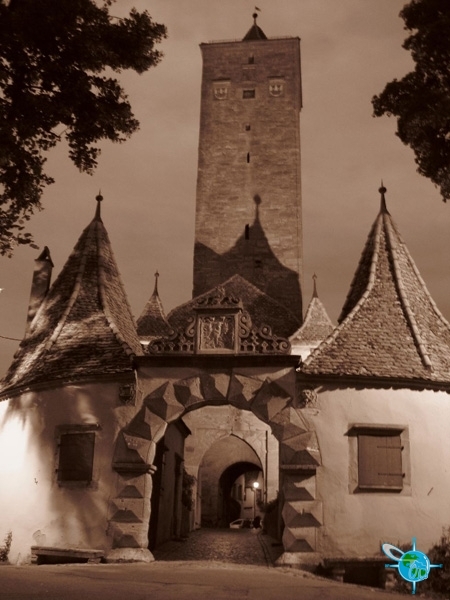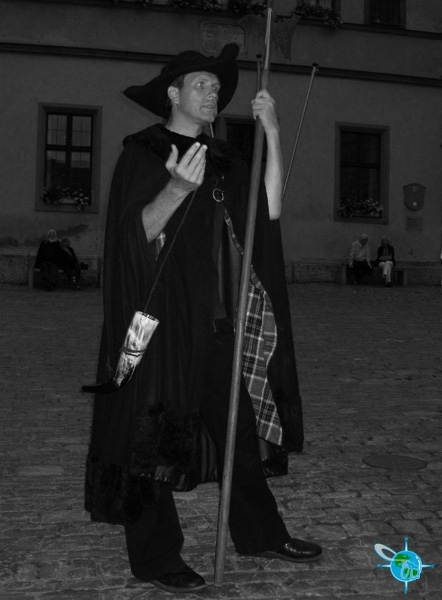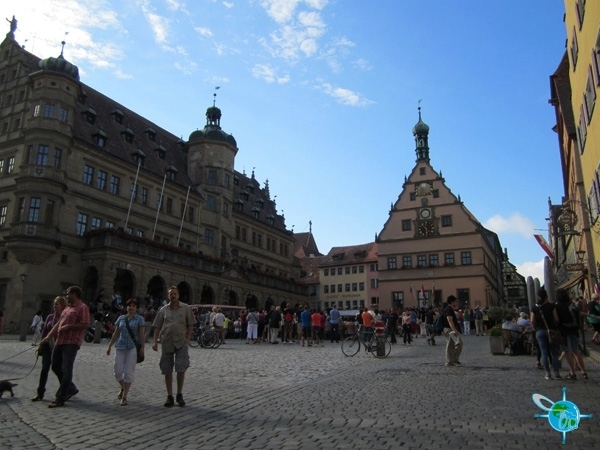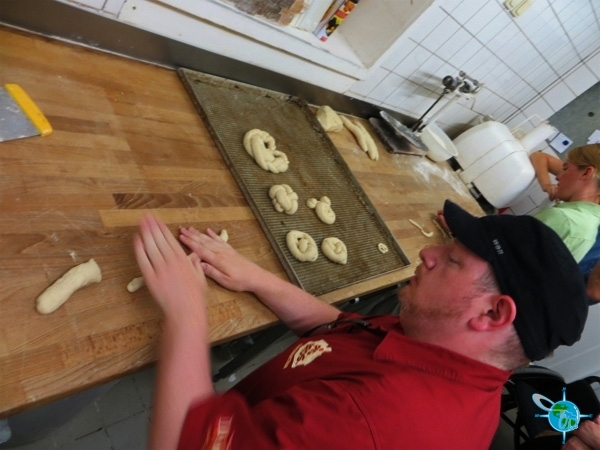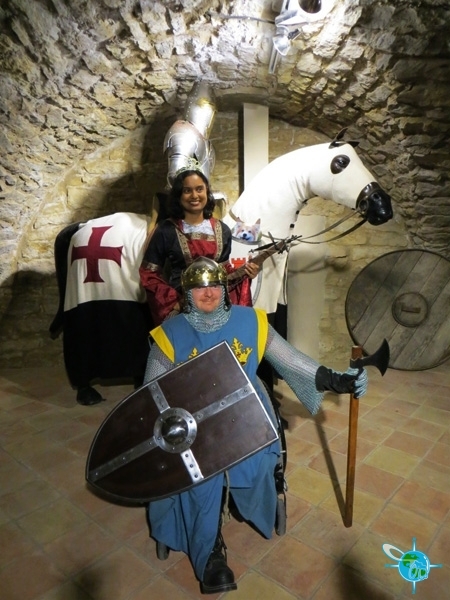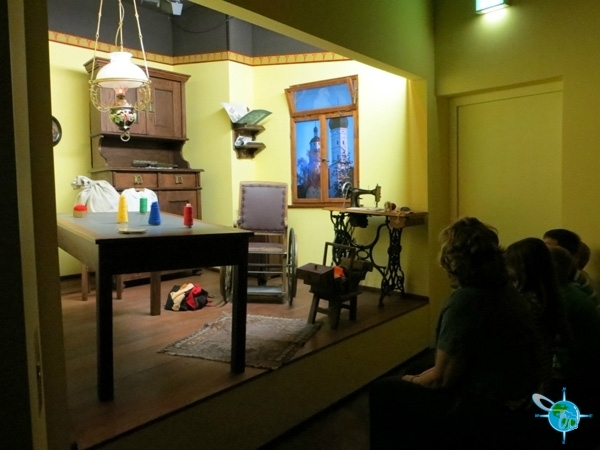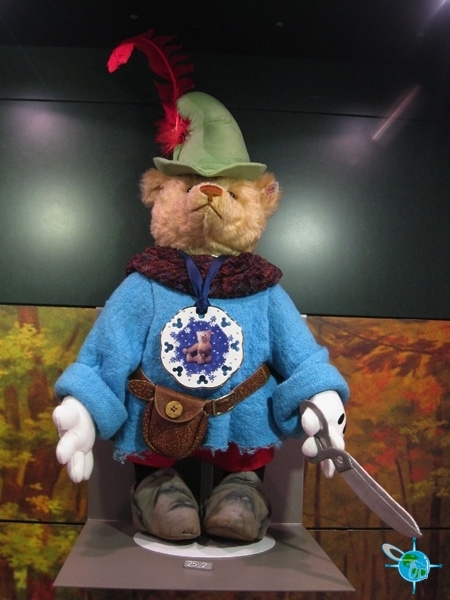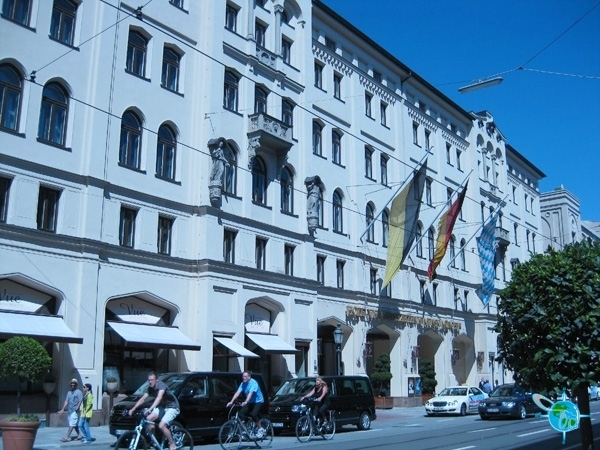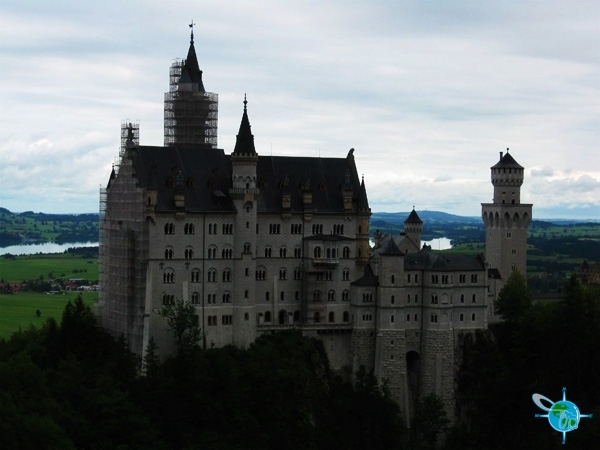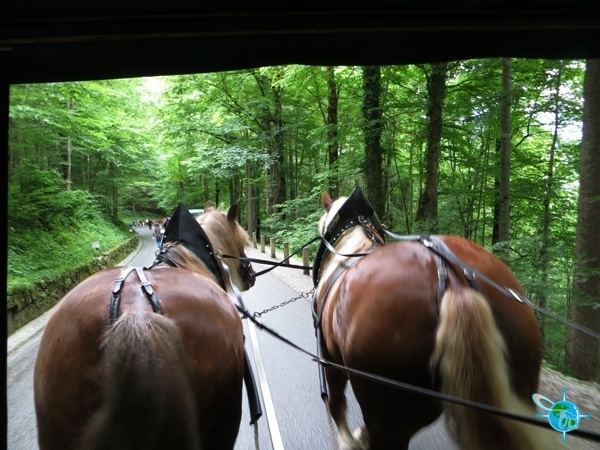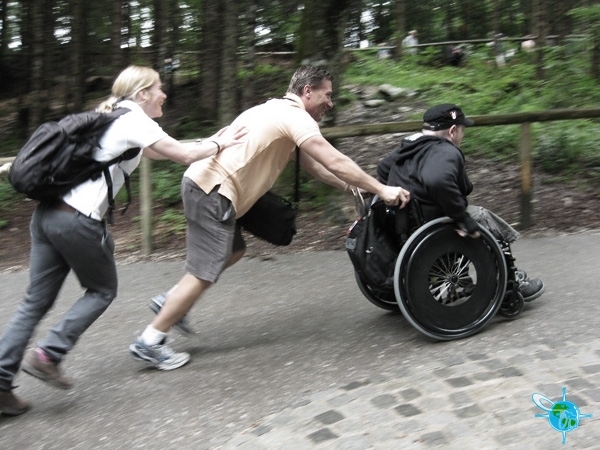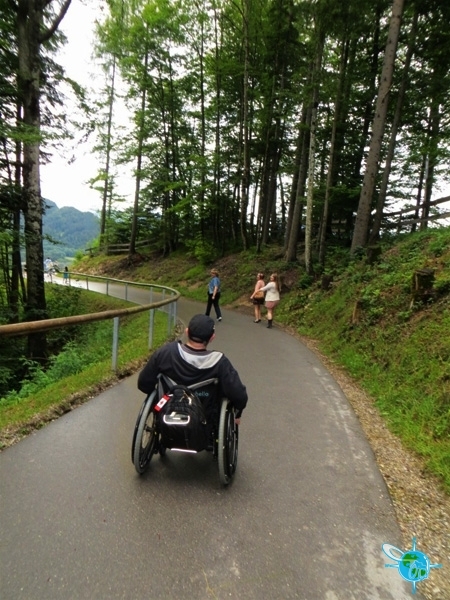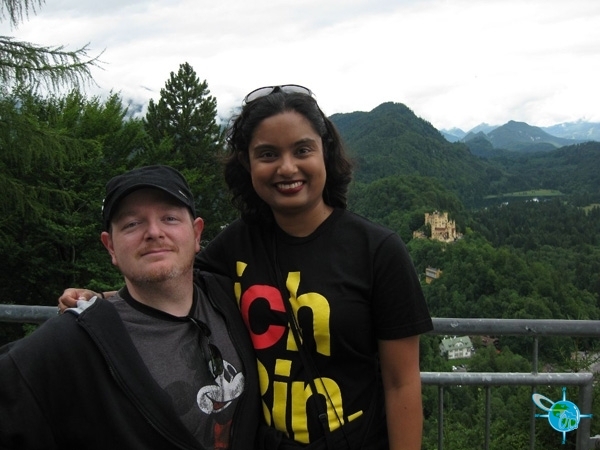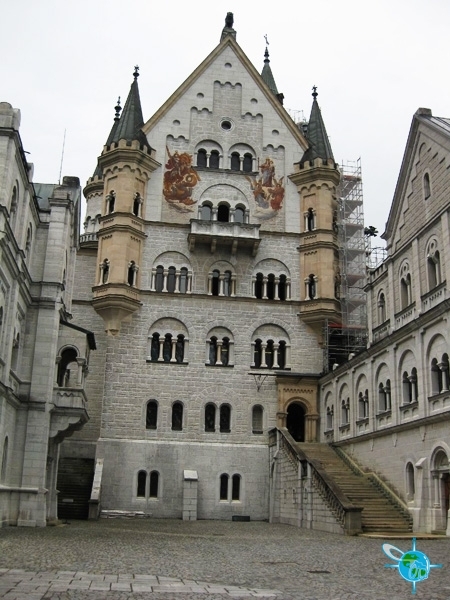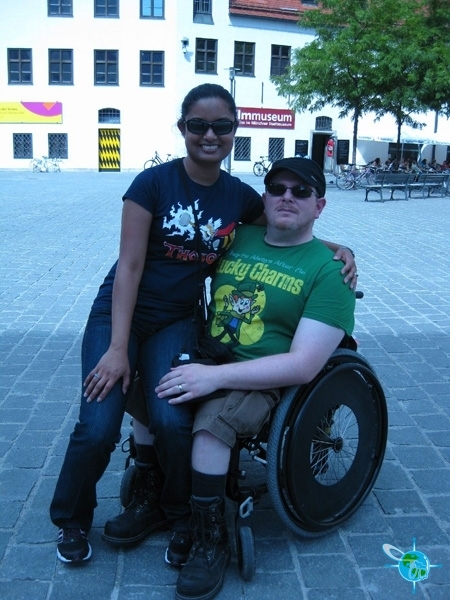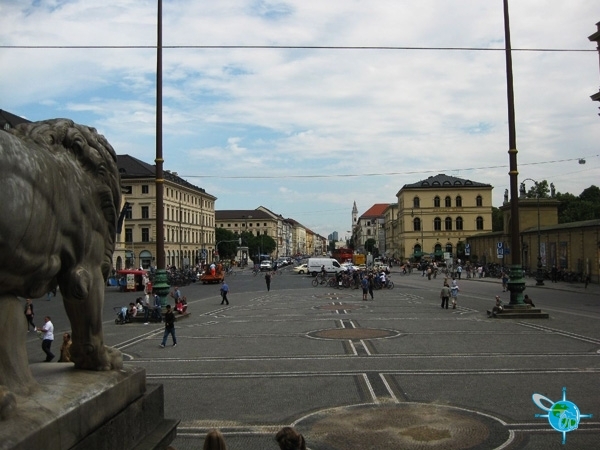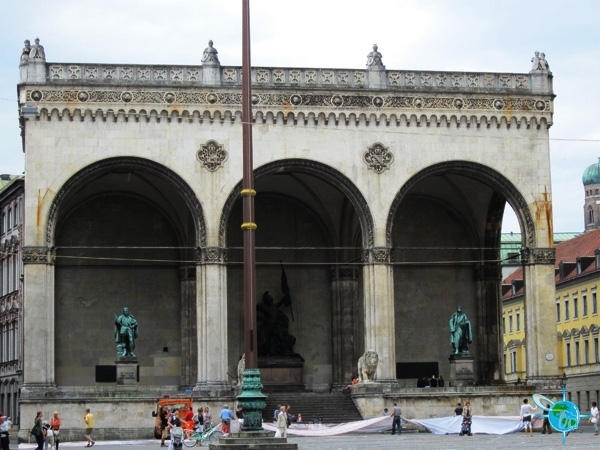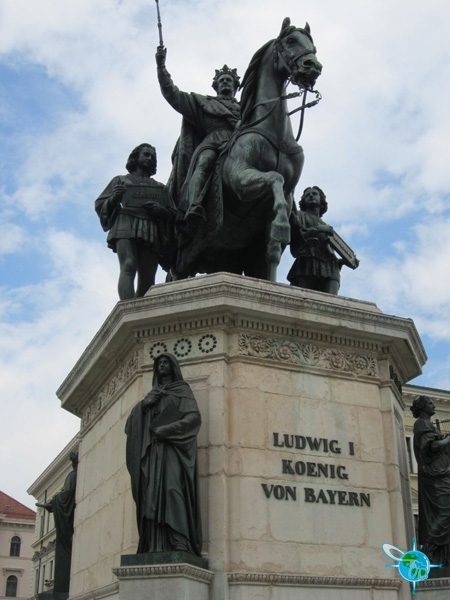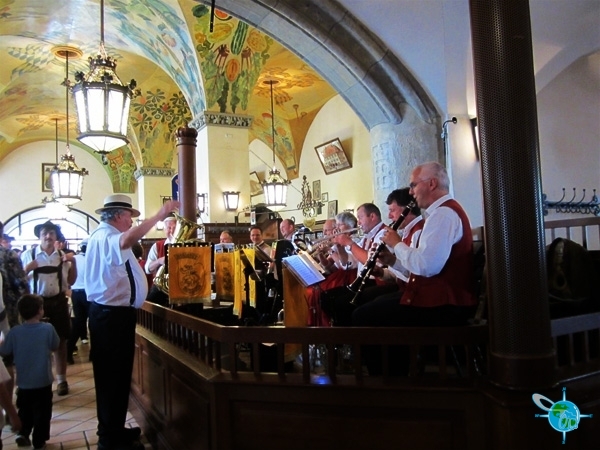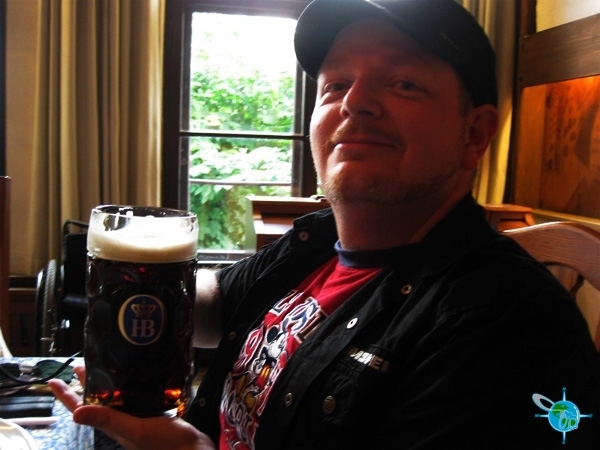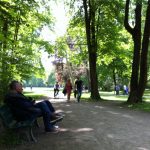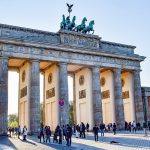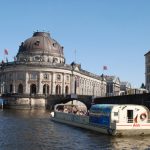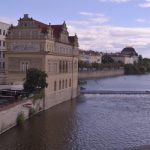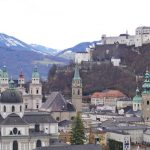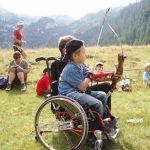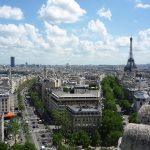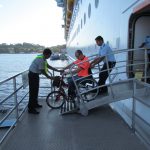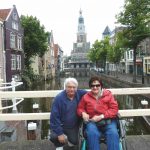My wife and I did our trip through Adventures by Disney, (ABD). In doing our research on the ABD trips, and trying to determine the ones that would be the most wheelchair friendly/accessible, we spoke with Disney’s booking agents. They were excellent at providing as much information as they could on the tours we were thinking of taking. They called the tour guides in each country to ask them for some feedback on accessibility, obstacles, etc. which I found to be going that extra mile for a prospective customer. Many of the tours required a certain level of physical ability or the need to have an able companion to assist. Nevertheless, we chose Germany. In the months leading up to our July trip, I did my best to strengthen my arms and legs so I could handle some of the difficult locations that the trip would have, like hills and old buildings.
Frankfurt Airport
Our trip started at Frankfurt Airport. We took the overnight direct from Toronto to Frankfurt, which is about 8 hours. I recommend booking business class to take advantage of more legroom and larger seats and taking compression socks to help with the circulation in the feet and legs. In business class, the washrooms were closer to our seats, but as it was a night flight, we slept most of the time.
Once we arrived, we were treated to excellent accessibility service by the Frankfurt Airport. Instead of disembarking at the gate, the plane stopped on the tarmac. I was able to walk down the staircase to meet my wife, who had already secured my wheelchair. However, there was another passenger who required additional assistance to deplane. A sky lift was brought, which was attached to the rear of the plane. At this time, an airport employee assisted the passenger onto the sky lift, which then descended to the tarmac. An accessible bus was brought for us and once the passenger was loaded onto the bus, we departed for baggage claim.
Once we arrived at the terminal, we were met with an airport representative who remained with our group through the immigration, customs, and baggage claim process. She made sure we were directed to the correct lines and in the right areas. Neither mine nor my wife’s German was good enough, so it was nice to have someone to help out. This process took longer than we were accustomed to when flying throughout North America, so by the time we collected our bags and looked for our driver, he had already left. ABD provides complimentary transportation to and from the airport to the hotel, so in this case, we had to make other arrangements to Heidelberg. We took a regular minivan taxi from the airport to the hotel. The total trip took about an hour, on the Autobahn, which has no speed limit. The ride was interesting, to say the least – much of the scenery was a bit of a blur! There were accessible taxis, but we didn’t use them. From Frankfurt, we headed straight to Heidelberg.
Heidelberg
In Heidelberg, we stayed at the Der Europaeischer Hof. The hotel was nice, but there are no ramps into the lobby. As we discovered, the staff was more than willing to help me up the few stairs and into the lobby, from there the rest of the hotel was accessible. Our room wasn’t wheelchair accessible, but it was large enough to wheel around and use the washroom without any assistance. I am still relatively mobile and don’t necessarily need to grab bars or other adaptions. Other than the front lobby, I was able to maneuver around the hotel, via ramps and elevators. The rooms use an actual key attached to a heavy-acorn keychain, so if one has dexterity issues, it may be challenging to use.
We did arrive a day early compared to the other travelers on our tour, which gave us time to get accustomed to the time change, and to spend some time exploring the town. Like many European towns and cities, the old sections of Heidelberg are paved with cobblestone streets and sidewalks, thus maneuvering around had some challenges. Extra pushing power was needed and my front casters did become stuck between the cobblestones a few times. This was a little jarring, so care is needed to prevent one from falling out of the wheelchair or pulling a muscle. Most of the shops were wheelchair accessible, but some did have areas where you did need to either go up one step or a few stairs into the back section of the store.
On our first tour day, we boarded a coach bus to Heidelberg Castle. This coach was our main method of transportation for the entire tour, as it took us from city to city, from Heidelberg to Munich. The bus was just like any typical North American touring bus, that didn’t have anything special for a disabled traveler. The bus operator and our tour guides were very helpful in helping me get on and off the bus, plus dealing with storing the chair in the compartments below. The castle was mostly accessible, but there were steep ramps up and down to different sections of the castle grounds. I did have some sections where I was unable to follow the tour, as they went up different levels in the castle that didn’t have any elevator access. So I did some solo exploration and met up with the tour (and my wife), in the wine cellar below.
One of the hallmarks of the ABD tours is the ability to experience portions of the tour that non-ABD tours do not get to experience. While at Heidelberg Castle, we were able to go down into the catacombs and walk in the castle moat. This part was quite difficult to navigate the wheelchair and it took a great deal of arm strength and some help from others for me to get through the catacombs and out into the moat. I don’t recommend doing this part unless you are good at off-roading and your chair is built for it. Our night ended with a ride on a funicular that had designated spaces for wheelchair users. The funicular took us down to the main street – the Haupstrasse. We made our way to an authentic German Biergarten and were introduced to the medieval sounds of the Hurdy Gurdy machine by the owner of the restaurant, whose family has played the instrument for generations.
Alsfeld
From Heidelberg, we traveled to a small town called Alsfeld – one of the oldest towns in Germany, dating back to the 12th Century. The main theme of the tour itself is focused on the Fairy Tale Route, which is a tourist attraction in Germany originally established in 1975. The route runs from Hanau in central Germany to Bremen in the north.
Tourist attractions along the route are focused around the brothers Wilhelm and Jacob Grimm, including locations where they lived and worked at various stages in their life, as well as regions that are linked to the fairy tales found in the Brothers Grimm collection. Many of the children’s stories I grew up with were born from stories out of small towns up and down this road that the Brothers Grimm traveled. Alsfeld was the home to the story of Little Red Riding Hood, and we got to see a reenactment of it played out by the local town actors. As for the town itself, again being very old, I had to deal with cobblestone roadways and streets, but other than that, everything was accessible and I was able to get around the local shops and follow our guides around the town giving us the history of the town.
Waldeck
After our short stay in Alsfeld, we headed to our next hotel location in a town called Waldeck. Hotel Schloss Waldeck is a castle converted into a hotel on top of a mountain, featuring some of the most awe-inspiring views of the countryside you will ever see. Because the castle was built on a mountain, the coach had to park at the base of the mountain. Needless to say, I then needed help to climb the forty-five-degree steep pathway up into the castle. It might be difficult for motorized scooters or anyone without arm strength or helpers to traverse the incline alone. Once we made it into the courtyard, then virtually every other area in the hotel was accessible. Later, we discovered a back entrance to the hotel, which was much less steep and a shorter distance compared to the main entryway.
To my knowledge, the hotel didn’t have any accessible rooms, but if they did they may have been booked during our stay. Our room was a decent size, one thing to note, is that the bathroom only had a standing shower. I had to improvise there, but the doorways were wide enough to bring the wheelchair in and out. There is an elevator in the tower, which brings you from the courtyard level up to the room level, the restaurant level, and the bar levels.
The day following our arrival at Waldeck, we went on a ferry ride around Lake Edersee. Boarding the ferry was easy, as it had ramp access on and off it, and I was able to get around the main deck without any issues. The washrooms were also on the main deck and did have an accessible stall.
After the ferry ride, we ate lunch at a small restaurant across the lake. Maneuvering around the tables was a little difficult because of the size of the dining room. After lunch, we tried our hand at archery at the base of the castle. My wife came quite close to hitting the target, but I was able to hit the target twice! Must be the arm strength from wheeling around! We returned to the castle to partake in a round of beer tasting.
On the morning of our last day, we woke before sunrise and went into the courtyard. There was a thick fog covering the lake and the castle and it was amazing to imagine soldiers standing guard on the battlements. As the sun rose, the fog slowly broke down around the courtyard, and eventually across the lake.
Lowenburg
After two amazing nights at Waldeck, we continued our tour to Lowenburg Castle. It was built in the 18th century to look like a medieval castle that had seen war. In reality, it hadn’t. The castle was built for show and nothing else. Once off the bus, getting around was fairly easy, but you did have to deal with gravel pathways. Most of the castle was accessible, save for some small door lips into and out of rooms. The second floor wasn’t accessible, so I did have to wait down in the courtyard for the tour group to come back down, one of our guides stayed with me to help pass the time.
On our way to lunch, we stopped off at the Hercules Monument and the amazing water feature that was built in Roman times, which still uses much of the same technology today. We had lunch at Gutshof Kassel Restaurant which was a fully accessible location. I did have I think the biggest schnitzel in my life at this place, even though we were told, they are half the normal size for tourists.
Rothenburg
From Lowenburg, we made our way to Rothenburg. We stayed in the old walled city part of this medieval town at the hotel Altes Brauhaus. This hotel didn’t have a ramp into the lobby, but I had help getting in and out of the building. The room was very large and the bathroom did have accessible rail bars. We were given a room on the ground floor, but there are multiple floors in the hotel and there is an elevator to the upper floors.
Around town, there was a lot to do and see, some of the highlights here were visiting some of the most amazing churches and really old buildings. For the most part, getting around wasn’t too hard, with most buildings having either a small lip or one step up into the structure.
We got to make pretzels in a local bakery, learning from a 4th generation pretzel maker. The shop itself was fairly small, and some tight spaces to maneuver around. The pretzel-making didn’t have anything set up for a wheelchair user, so you will have to be able to reach up to a table to roll out your dough and form your pretzel. Another stop was at a medieval shop, trying on chain mail armor and buying a pair of gauntlets. Sadly the shop wasn’t all that wheelchair friendly, and you do have to go down to the basement to try on the armor. There is a large Christmas store, but it is not very accessible. The aisles are smaller and it is difficult to turn around. I ended up waiting close to the exit for my wife to browse the ornaments.
Later that night, our traveling companions took part in the Nightwatch Tour that took you around the old walled city. I didn’t partake in it, I was a little sore from traveling. The tour took place on the streets, so aside from the usual cobblestones, it was accessible.
After our stay in Rothenburg, we started towards our last stop, Munich. On the way, we stopped at the Steiff Bear Museum. We learned about the history of the Steiff teddy bear company and its founder, Margarete Steiff. She contracted polio as a child and was confined to a wheelchair. As a result, this building was built with accessibility in mind from the start. There is a large elevator from the lobby into the upper floors and an elevator down to the shopping and restaurant areas.
Munich
In Munich, we stayed at the Four Seasons Kempinski Hotel. This was an older hotel and didn’t have a ramp into the lobby, but there was a side entrance that did have a lift to get you into the hotel. One other thing was to get from the lobby to the elevators and the rest of the building; you did have to navigate another set of stairs. Apart from that, the hotel room was accessible, and so was the rest of the hotel. It would be safe to assume that this
The day we arrived in Munich, we went on a walking tour of the area around the hotel. This particular tour was long and fast-paced; at times we had to move quickly to keep up. However, every stop on the walking tour was accessible. On the tour, we got to learn about the history of Bavaria / Munich, centered on the wealth of architecture, art, and history in Munich’s palaces, gardens, and museums around our hotel.
The next day, we visited Neuschwanstein Castle just southwest of Munich. This is the castle that Walt Disney used as inspiration for Sleeping Beauty Castle in Disneyland, California. To get to the castle, we first boarded a smaller accessible bus, which was equipped with a lift and took us a short way up the mountain. At maximum, this bus could hold two wheelchairs. The first place we stopped on our way to the castle was the Marion Bridge, (Marienbrucke). This vantage point afforded us a good view of the castle and the falls below. The bridge is sturdy and accessible with a wide paved pathway, but I didn’t go too far as I’m afraid of heights.
After the bridge, we continued up the mountain. In some places, I required a great deal of help to get up the steep paths. To get into the castle, I used a side entrance and a service elevator to connect with the tour group and gain access to each floor that the tour. There were only a few locations where I couldn’t go, but for the most part, the castle was easy to navigate. For the trip down, we took the horse-drawn carriage. The wheelchair was strapped to the back of the coach, while we rode inside.
On our last night with the tour, we had dinner at the famous Hofbrauhaus Beer Garden. This is one of the largest and most well-known beer gardens in Munich. It is quite popular year-round, but especially during Oktoberfest. The Hofbrauhaus is a substantial building with many halls branching off of the main beer garden and a few halls on the upper floors. There is ample room to navigate the main floor beer garden, even with the crowds. Our dinner was on the second floor and there was elevator access, as well as having washroom, with accessible stalls. We had a diverse feast of different traditional German foods; Kartoffelsalat (potato salad), Schweinbranten mit NatursoBe (pork roast with gravy), Schweinswurstl (fried port sausages, etc.) Oh and 2 liter Beers!
Since we spent an extra day in Munich, my wife and I was able to walk around parts of the city we didn’t see on the tour. The buildings surrounding the hotel and up and down the Maximillianstrasse were amazing. We visited the Odeonplatz and soaked up the history in the square. The history and culture of Munich are amazing, as you see influences from Italy, Austria, and Switzerland in terms of food, music, and art.
Germany Wheelchair Access Summary
I cannot say enough good things about this trip and how much people wanted to help me get around. This truly was a highlight of my experience, for it allowed us to fully enjoy our time in Germany. This trip many of the ABD tours are active trips. As such, this would not be a suitable trip if the traveler is not physically able to manage rough terrain and steep inclines. In addition, an electric chair may pose a problem getting around the castles and steep inclines – i.e. Waldeck. Before you go to Germany here are a few more tips:
- Cobblestones: At times, they were difficult to get around on them. Each city’s cobblestones are different – some are thick and some are thin. I have 6” casters on my wheelchair and I became stuck in the “grout” between the stones and almost fell out of the chair.
- Bicycle lanes: There are designated bicycle lanes in most big cities. Being from North America, we may not be accustomed to the adoption of bicycle use. These lanes must be treated like the street and one must look both ways to avoid a collision with a cyclist.
- Accessible public transit: Public transit is abundant in many of the larger cities – buses, streetcars, and subways

